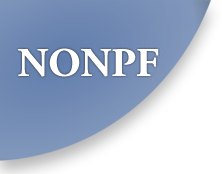Integrating Complementary and Alternative Medicine Concepts into the NP Curriculum: Inevitable or Optional?
Objectives: The aim of this presentation is to decribe various ways in which Complementary and Alternative Medicine concepts can be infused into the NP curriculum including (1). conceptual models for studying the use of CAM; (2). CAM competencies that NPs should achieve upon completion of their curricuium. (3). Fundamental theoretical underpinnings of CAM modalities, (4). Examples of CAM modalities for women’s health. Practical exemplar approaches to successful infusion of CAM such as CAM Camp or Pharm-CAM into NP curriculum will be discussed.
Solution: NPs must possess a better knowledge and understanding of CAM; critically evaluate possible gaps in their prescribing habits and referral pattern and acknowledge the growing trend of CAM therapies and start to incorporate more open discussion into the patient-provider relationship. Inclusion of CAM concepts into NP Curriculum, thus preparing NPs in CAM competencies is inevitable if they are to be truly patient-centered health care providers of the future.

